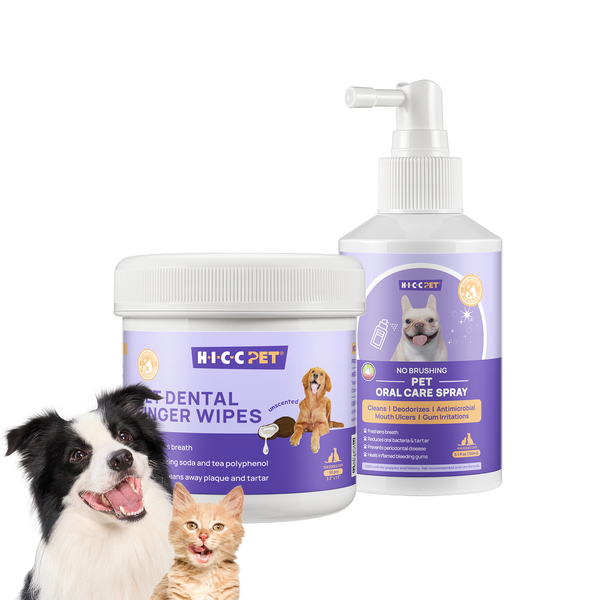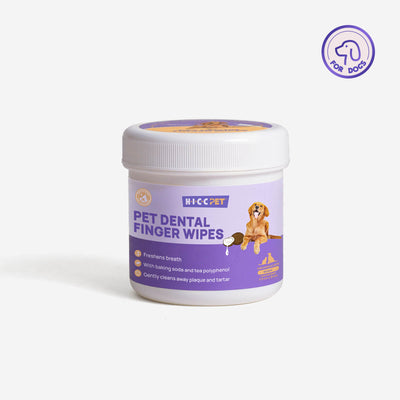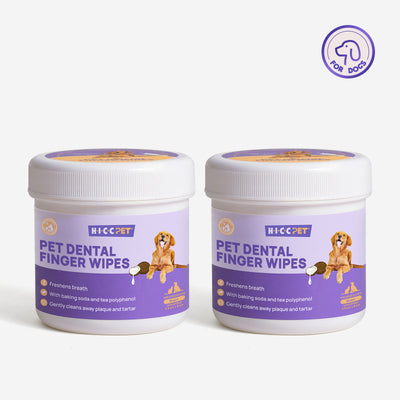Table of Content
Did you know that periodontal (gum) disease is the most prevalent ailment among pet animals? It's estimated that over 90% of dogs and 70% of cats aged 5 years and above suffer from this condition. This serious condition is caused by the build-up of plaque and tartar on the teeth, which can lead to inflammation and infection of the gums. If left untreated, periodontal disease can cause tooth loss, pain, and even organ damage. That's why it's crucial to maintain good dental hygiene in your pets and take them for regular dental check-ups to catch any signs of periodontal disease early. With proper care and attention, you can help protect your pet's dental health and overall well-being. Keep reading to learn more about periodontal disease in dogs and cats, the effects of being left untreated, and how to prevent it.
Understanding Periodontal Disease in Dogs and Cats

Periodontal disease is prevalent among adult dogs and cats, posing risks of severe oral health issues and tooth loss. This condition occurs due to bacterial plaque buildup on the teeth, which hardens into tartar. Notably, tartar above the gum line doesn't directly cause the disease. Regrettably, owners often struggle to detect early signs of periodontal disease, leading to delayed intervention. By the time professional dental cleaning and periodontal therapy are sought, the disease may have progressed significantly, making it challenging to prevent extensive damage or save affected teeth.
The Stages of Periodontal Disease in Dogs and Cats
Stage 1:Gingivitis
Sage 2: Early Periodontitis
Gingivitis can become periodontitis if left untreated. At this point, it is characterized by inflammation spreading beneath the gum line. This stage involves the development of periodontal pockets and the loss of bone and soft tissue supporting the teeth. These pockets then trap more bacteria and food debris, worsening the situation. As the infection advances, there may be increased redness, swelling, and mild to moderate discomfort in the gums, with pets potentially showing signs of mouth sensitivity or discomfort while eating.
Stage 3: Moderate Periodontitis
Moderate periodontitis signifies the advancement of periodontal disease, with increased infection and tissue deterioration supporting the teeth. As the condition progresses, deepening periodontal pockets allow bacteria to reach tooth roots and surrounding bone, leading to significant attachment loss and potential abscess formation. Clinical signs of moderate peridontitis include bad breath, gum bleeding, tooth loss, and occasional reluctance in eating or playing.
Stage 4: Advanced Periodontitis
In its final stage, advanced periodontitis presents the most severe form of periodontal disease in dogs and cats. Extensive destruction of supporting tissues, ligaments, and bone results in loose teeth prone to falling out, leading to painful ulcers and infections. Common symptoms include chronic pain, difficulty eating, and weight loss. Moreover, oral bacteria may enter the bloodstream, potentially causing systemic health issues.
Signs of Periodontal Disease
While the signs of periodontal disease in pets can vary based on the stage of the disease as well as the individual pet, the common signs include:
Bad breath (halitosis)
Red, swollen, or bleeding gums
Tartar buildup on teeth
Loose or missing teeth
Difficulty eating or chewing
Pawing at the mouth or face
Reluctance to play with chew toys
Changes in behavior or mood
Decreased appetite
Weight loss
Nasal discharge and sneezing
Swollen jaw
Keep in mind that not all pets show obvious signs of periodontal disease, especially in the early stages. This is why regular vet exams are crucial as your veterinarian may be able to pinpoint symptoms that you may not notice.
Effects of Untreated Periodontal Disease
Untreated periodontal disease in pets can lead to severe complications and discomfort, highlighting the critical importance of maintaining your pet's dental health. Beyond causing oral discomfort, the bacteria thriving in the mouths of pets with dental disease pose significant risks. They can infiltrate the bloodstream, triggering systemic effects that impact organs like the heart, liver, and kidneys. This increases the risk of conditions such as endocarditis, valvular disease, and heart disease. Additionally, the liver and kidneys, responsible for filtering blood, are vulnerable to infection and inflammation. Compromised function in these vital organs may manifest as systemic signs of infection, including fever, weight loss, and decreased appetite.
Preventive Measures

At Home Care
- Daily Tooth brushing: Establish a daily tooth brushing routine for your pet using a pet-specific toothbrush and toothpaste. Brushing helps remove plaque and prevent the accumulation of tartar, reducing the risk of periodontal disease. Start slowly and gradually introduce tooth brushing to your pet to make it a positive experience.
Dental Wipes and Spray: HICC Pet® Dental Finger Wipes and Oral Care Spray make excellent additions to your pet’s daily dental routine. The Dental Finger Wipes are a toothbrush alternative formulated with fermented coconut oil, and other plant-based ingredients while the Oral Care Spray is formulated with Hypochlorous Acid and deionized water which both effectively combat tooth decay, address bad breath, and minimize plaque and tartar.
Dental Diets and Treats: Consider feeding your pet dental-specific diets and treats designed to promote oral health. These products are formulated to help control plaque and tartar buildup, contributing to healthier teeth and gums.
Dental Toys and Chews: Provide your pet with dental toys and chews designed to help clean their teeth and massage their gums. Chewing on these toys can help remove plaque and tartar while keeping your pet entertained and engaged.
Veterinary Care
- Regular Exams: Schedule routine dental check-ups with your veterinarian to assess your pet's oral health and detect any signs of periodontal disease early on. Professional cleanings may be recommended to remove tartar buildup and prevent the progression of dental issues.
Dental Cleanings: Schedule regular professional dental cleanings for your pet as recommended by your veterinarian. These cleanings involve thorough scaling and polishing of your pet's teeth under anesthesia, ensuring a deep clean and addressing any underlying dental issues.
Conclusion
Please note that the information provided in this article is for educational and informational purposes only. We are not veterinarians, and the content shared here should not be considered professional veterinary advice.
If you have any questions regarding copyrights or the use of materials in this article, please contact us for clarification.







Thanks for your interaction and support.